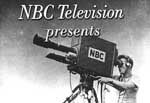News consumers in America are getting their news from here, there and everywhere, using multiple platforms, showing practically no loyalty to particular news outlets and disseminating news prolifically on social networks.
 It is part of a large paradigm shift in which the Internet is now the third most-popular news platform, behind local and national television news and ahead of national print newspapers, local print newspapers and radio, according to a new study conducted jointly by the Pew Research Center’s Internet & American Life Project and Project for Excellence in Journalism.
It is part of a large paradigm shift in which the Internet is now the third most-popular news platform, behind local and national television news and ahead of national print newspapers, local print newspapers and radio, according to a new study conducted jointly by the Pew Research Center’s Internet & American Life Project and Project for Excellence in Journalism.
The survey, released on Monday, March 1, states that getting news online fits into a broad pattern of news consumption by Americans; six in ten (59%) get news from a combination of online and offline sources on a typical day.
The Internet and mobile technologies are at the center of the story of how people’s relationship to news is changing, the report says. In today’s new multi-platform media environment, news has become portable, personalized, and participatory.
 While none of this should take anyone particularly by surprise, some of the numbers themselves have broad implications.
While none of this should take anyone particularly by surprise, some of the numbers themselves have broad implications.
The survey found that 33 percent of cell phone owners now access news on their mobile devices; 28 percent of Internet users have customized their home page to include news from sources and on topics that particularly interest them, and 37 percent of Internet users have contributed to the creation of news, commented about it, or disseminated it via postings on social media sites such as Facebook and Twitter.
 In addition, the report says, people use their social networks and social networking technology to filter, assess, and react to news. And they use traditional email and other tools to swap stories and comment on them. Among those who get news online, 75 percent get news forwarded through email or posts on social networking sites and 52 percent share links to news with others via those means.
In addition, the report says, people use their social networks and social networking technology to filter, assess, and react to news. And they use traditional email and other tools to swap stories and comment on them. Among those who get news online, 75 percent get news forwarded through email or posts on social networking sites and 52 percent share links to news with others via those means.
Reporter Laura McGann, writing on the Nieman Journalism Lab’s Web site at Harvard University, wrote, “Project director Tom Rosenstiel told me the findings have serious implications for online news business models: “The data suggest that the notion of a primary news source is almost obsolete. People graze. I think it’s increasingly clear that conventional popups and display advertising aren’t going to work.”
The news consumption paradigm is likely to keep shifting, too.
Despite all of this online activity, the typical online news consumer routinely uses just a handful of news sites and does not have a particular favorite, the report stated. And overall, Americans have mixed feelings about this “new” news environment. Over half (55 percent) say it is easier to keep up with news and information today than it was five years ago, but 70 percent feel the amount of news and information available from different sources is overwhelming.
The full, 51-page report is here, and a PDF version is here.